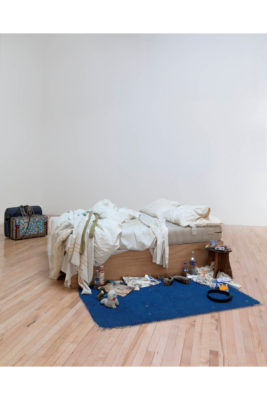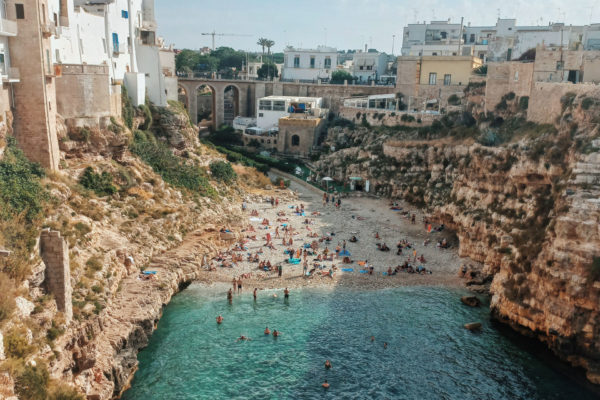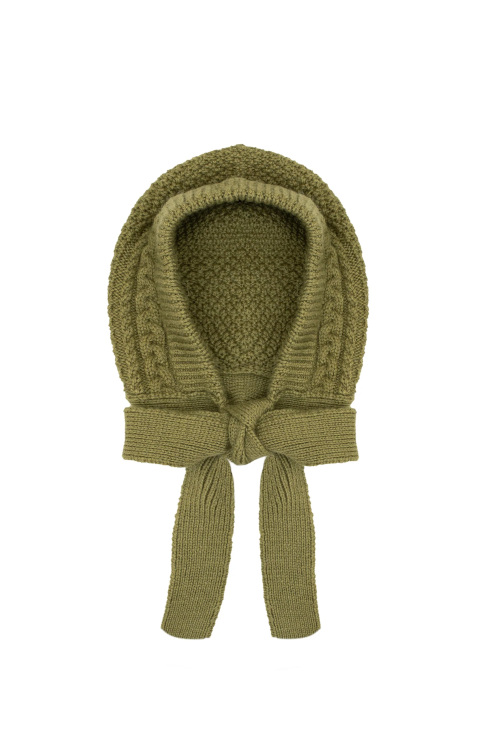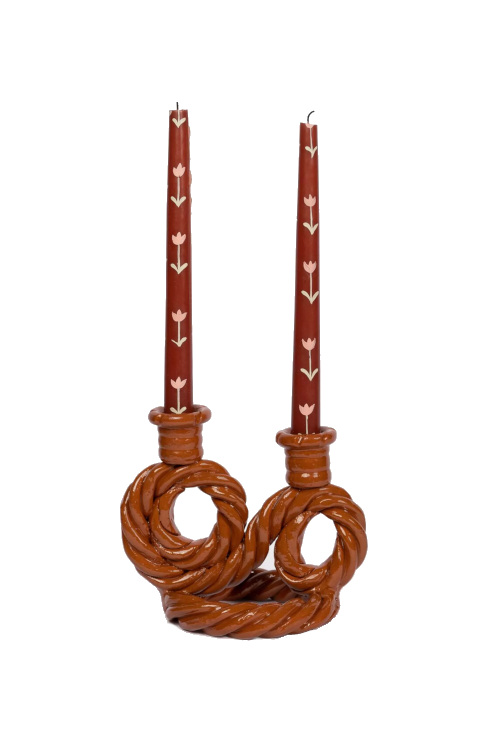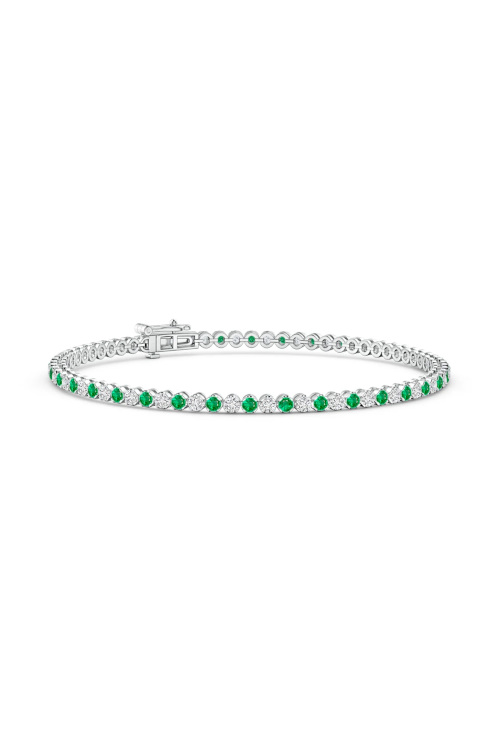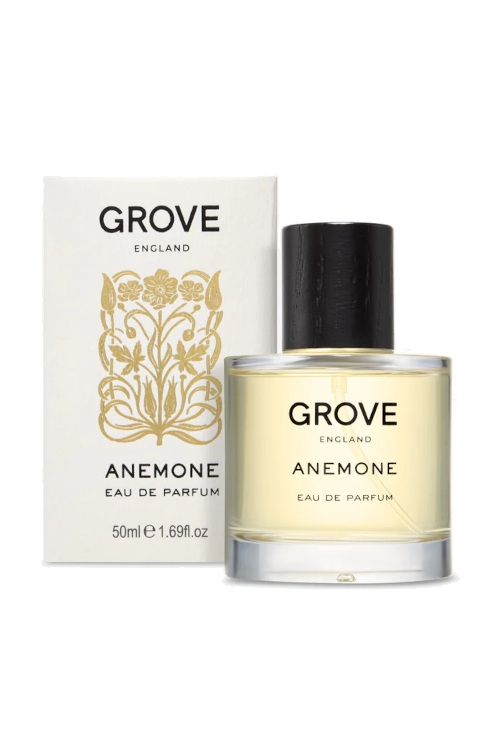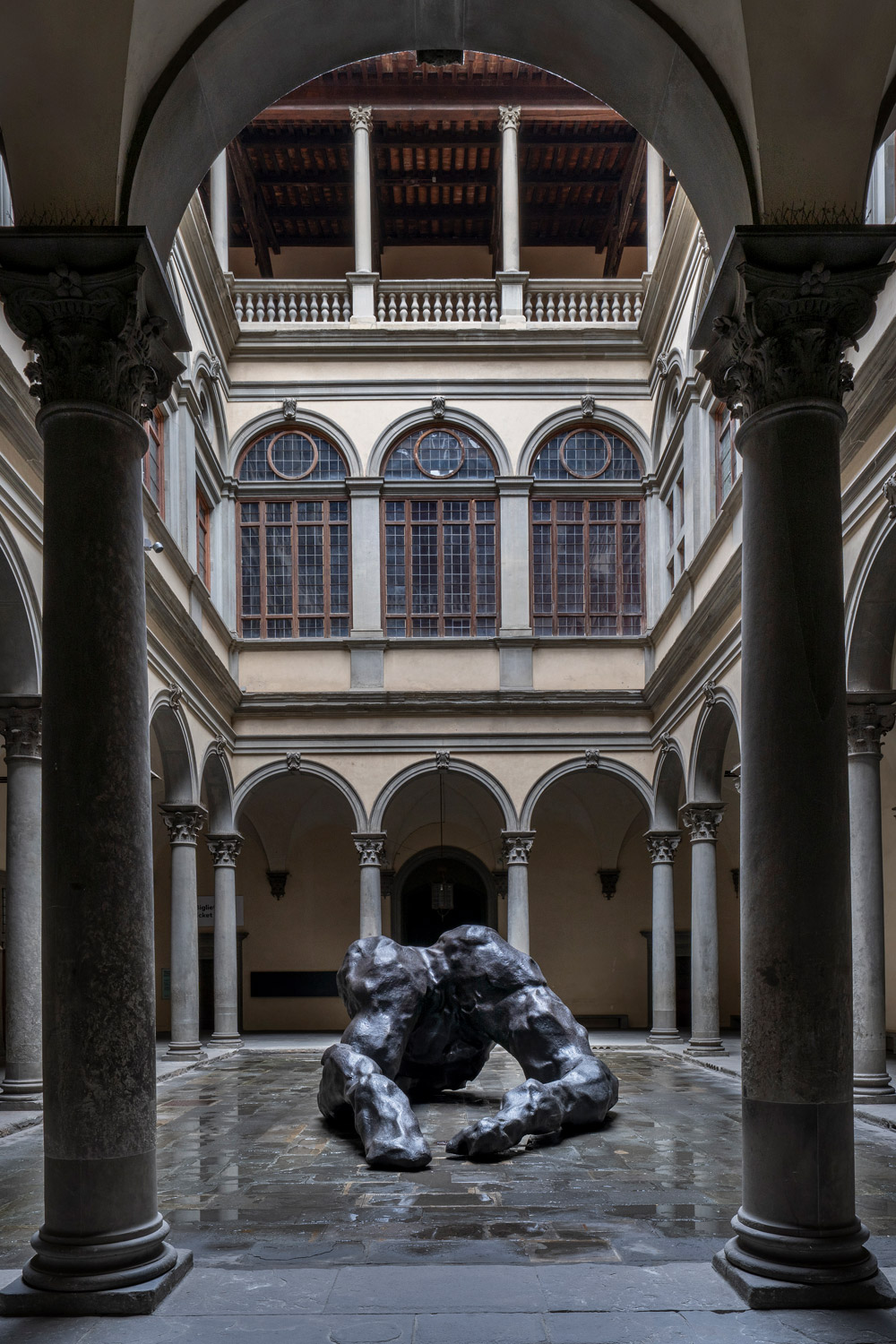
‘Sex and Solitude’: A Review Of Tracey Emin At Palazzo Strozzi, Florence
By
6 months ago
Inside Tracey Emin’s latest show in Florence, on until 20 July
Tracey Emin’s brilliant show at Florence’s Palazzo Strozzi, Sex and Solitude, offers an opportunity to explore the city, led by the artist’s work and those that inspired her
Review: Tracey Emin. Sex and Solitude
Across the entrance to one of Florence’s most iconic Renaissance palazzos, a blue neon sign announces ‘Sex and Solitude’ in a slanting cursive that makes an unexpected contrast to the huge stones that make up this fortress-like palace. This is the perfect way to tell the inhabitants of the city of art that the exhibition housed inside the Palazzo Strozzi is wildly different to the Renaissance paintings and sculptures usually seen in Florence. Indeed, Sex and Solitude is Tracey Emin’s first institutional exhibition in Italy, a show that brings over 60 of the artist’s works into dialogue with the city’s classical grandeur. And it offers a brilliant way to see the city through the lens of Emin’s work.
Familiar to the British public for the controversy that surrounded her nomination for the Turner Prize in 1999, for the 1998 installation My Bed, here in Italy, she is known more for her art. ‘Here they judge me for the integrity of my work,’ Emin says. And the artist’s raw emotionality is surprisingly at home in the Renaissance city, ‘because it’s about suffering,’ Emin says, pointing out that in Italy, ‘it’s in their nature to be emotional. There’s no stiff upper lip in Florence. It feels very liberating for me.’
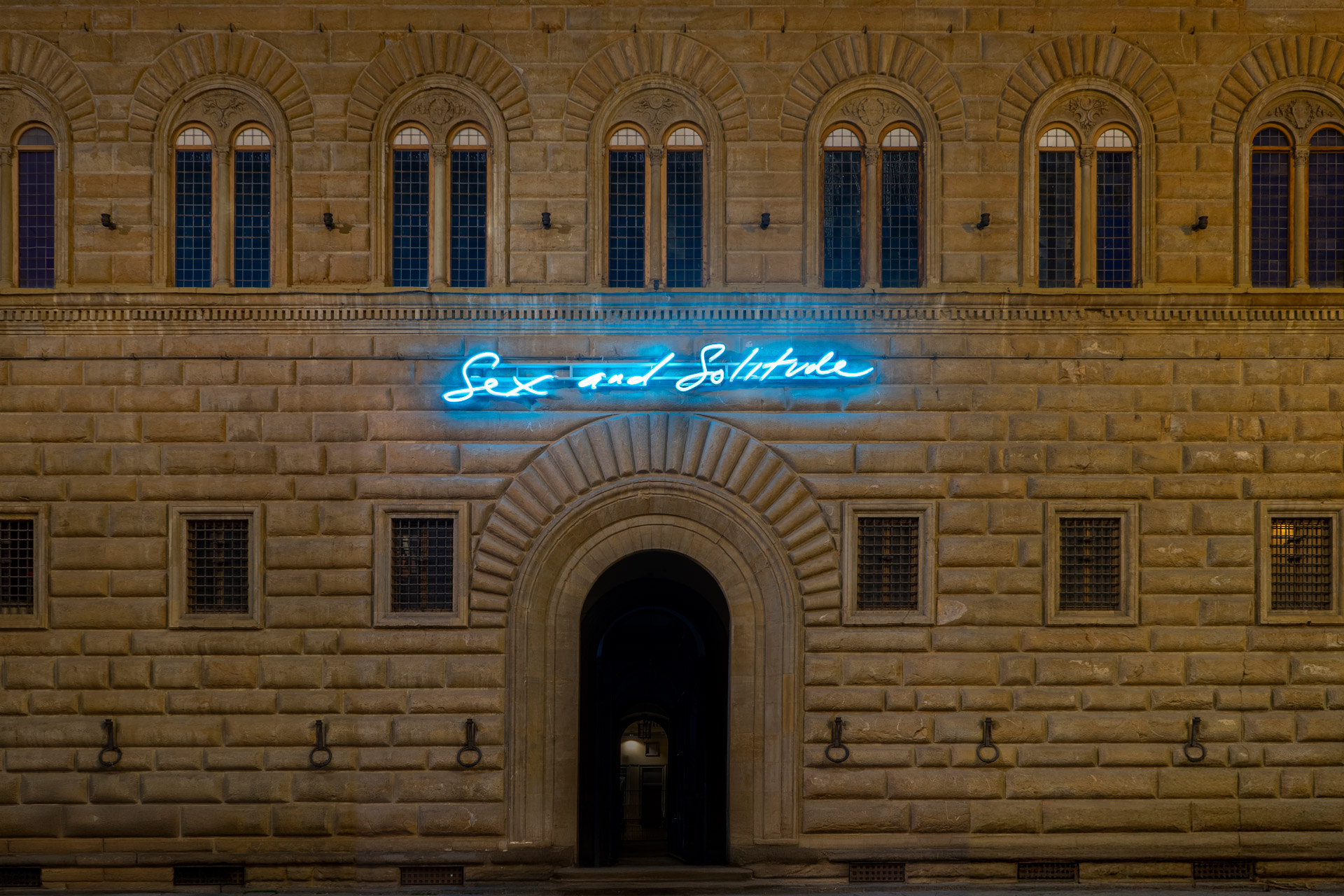
Photography by Ela Bialkowska
Although her work is so different in style to the Renaissance and classical art that fills the city’s streets and museums, the monumental bronze sculpture that sits in the Palazzo Strozzi’s courtyard, I Followed You To The End (2024), stands as a testament to Emin’s engagement with the city’s sculptural heritage. Shown for the first time in Italy, the sculpture echoes the famous public bronzes that dot the city, such as Giambologna’s equestrian statue of Cosimo de’ Medici in the piazza Signoria round the corner. And the Strozzi’s courtyard is an open space, making it free for anyone to wander through, see, and touch.
Inside the palace, Emin’s art from the past three decades pulses with intimacy and confrontation. From bronze sculptures and embroidered textiles to neon phrases and visceral paintings, the exhibition traverses the artist’s favourite terrains of desire, grief, sexuality and resilience. It’s not so much a retrospective as a thematic journey through Emin’s psyche, where the body is both subject and symbol. Unlike the reverent symmetry of the Renaissance masters that populate Florence’s museums, Emin’s work thrums with chaos: her lines scratch and scream across canvas; her words, lit in neon, are both confession and accusation, echoing off the frescoed ceilings with a shock of intimacy rarely permitted in such institutional grandeur.
And here is what Emin does best – collapse the distance between viewer and artist, between art and life. Sex and Solitude is not just a title but a thesis. Desire is laid bare, not prettified.
Loneliness is given space, rather than shame. In the rooms where Cosimo de’ Medici once plotted, Emin bleeds onto linen with defiance and grace. And she unashamedly examines what it is to be female, to be human, and to live a life not sanitised for the male gaze.
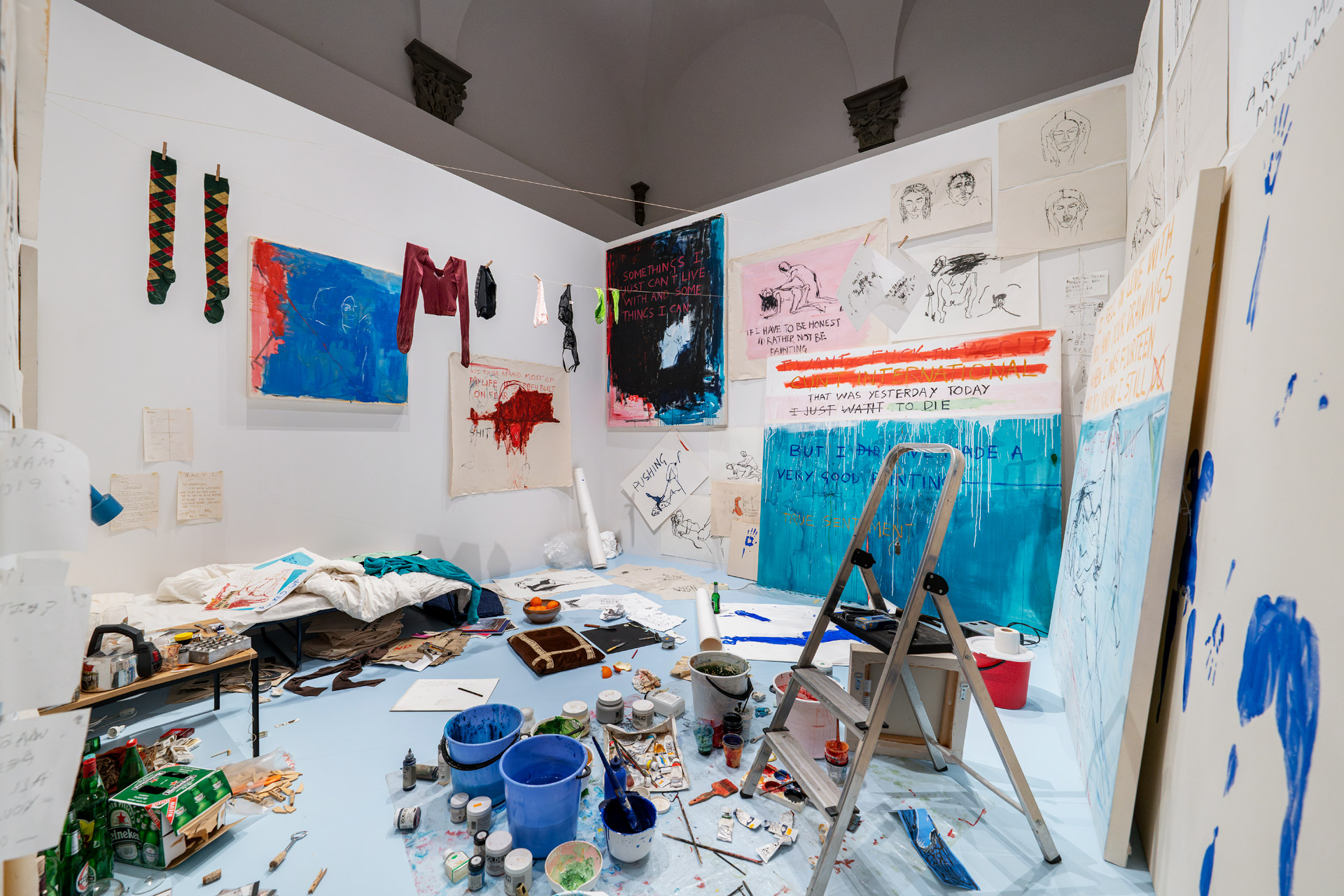
Photography by Ela Bialkowska
The show is also shaped by her recent experience of cancer. There’s a quieter pain here too, a tenderness that edges into the spiritual. Mortality hovers over her later canvases like mist, and some of these paintings seem to be haunted by some of the Renaissance’s most famous works: perhaps no surprise as she taught herself painting again by studying the Renaissance masters at the National Gallery in London. And Emin’s recent bronze doors of the National Portrait Gallery in London were inspired by Ghiberti’s bronze gates of Paradise at the Florence Baptistry (visitable just a five-minute walk away in the Piazza del Duomo, the originals languishing in the Opera del Duomo Museum), so the connections with Florence run deep in her later work.
Weaving her even deeper into the city of art, the show extends beyond the palace walls with a Fuorimostra itinerary, a curated cultural trail that invites visitors to explore more of Florence through Emin’s lens. Just around the corner, the iconic Hotel Savoy hosts one of Emin’s luminous neons in its elegant lobby, while also offering a stylish base for your stay in the heart of the city and a few minutes’ walk from the show. The hotel’s Irene restaurant, with its delicious contemporary spin on Tuscan cuisine, is perfect for a post-museum lunch.
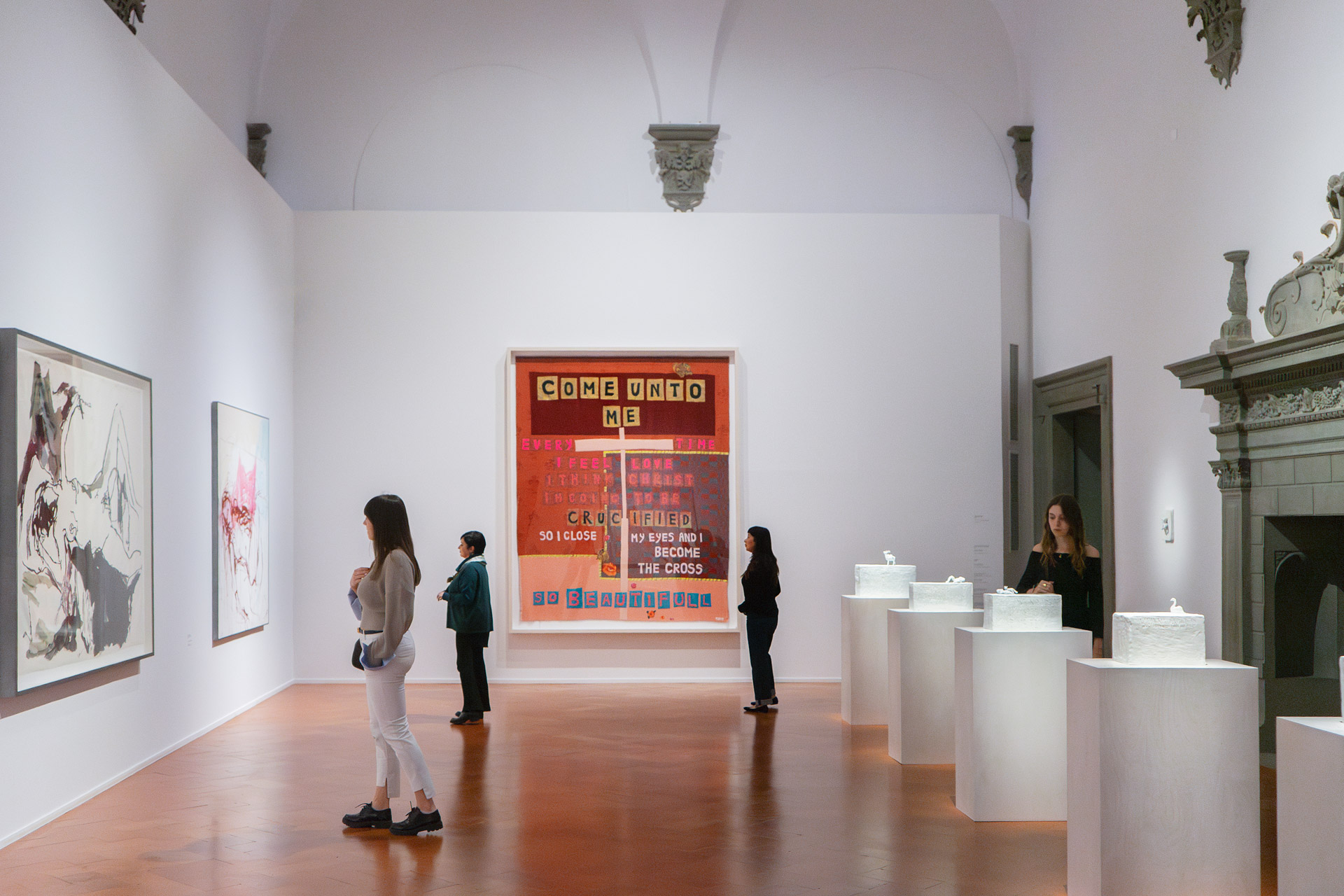
Photography by Ela Bialkowska
Over in Piazza della Signoria, the Palazzo Gucci is screening a series of Emin’s video works, and you can take in more fashion-meets-art at Gucci Garden, with its playful design archive and two Michelin-starred Gucci Osteria helmed by Karime López – a fitting finale to a culture-saturated day.
Florence is a walkable city of secrets, and ‘Sex and Solitude’ opens up a new way of exploring it – not just through the splendour of its Renaissance past, but through the raw, contemporary honesty of one of Britain’s most important living artists.
In a city that venerates the divine form, Emin brings us the truth of the lived body. She dares to be ugly, to be exposed, to be female on her own terms. And in doing so, she gives Florence a new kind of beauty – one that is contemporary, courageous, and deeply human. Not to be missed.
VISIT:
Tracey Emin. Sex and Solitude is on until 20 July at Palazzo Strozzi, piazza Strozzi, Florence, palazzostrozzi.org




